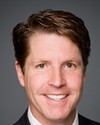I'll try to address all of your questions.
In terms of decision-making, as with our other private asset classes, we have built an in-house team to make decisions. From time to time they will be seeking external advice to help them, but we see a lot of value in making those investments with in-house expertise.
To give you some background on why we've created this asset class called renewable resources, which include timberland and farmland, there are a few things that as an investment organization we want to make sure we're focusing on. The first thing is to recognize that we are funding liabilities, and thus we will be taking a close look at the nature of those liabilities. As I mentioned before, that means we will be favouring investment so that where we fail, there's an equity premium we can get that will also provide some inflation protection over time. One thing we need to keep in mind is that the pension obligations of the public service pension plan are highly sensitive to inflation. Those final average earnings are fully indexed in retirement, so we want to pay close attention to inflation. In our mind, timberland and farmland are definitely well geared to keep pace with inflation.
A third criterion that we look at is purely diversification. In our mind, investing in timberland and farmland is definitely a strong diversifier from the other investments in our portfolio, which will help us weather more volatile market conditions. A good example of that is when we invest in timber we buy into biological growth, which is not well correlated with the economy or where the stock market is going, so for us there are strong advantages in doing that.
I believe you had one question on the ESG. Mark, do you want to touch on that?




